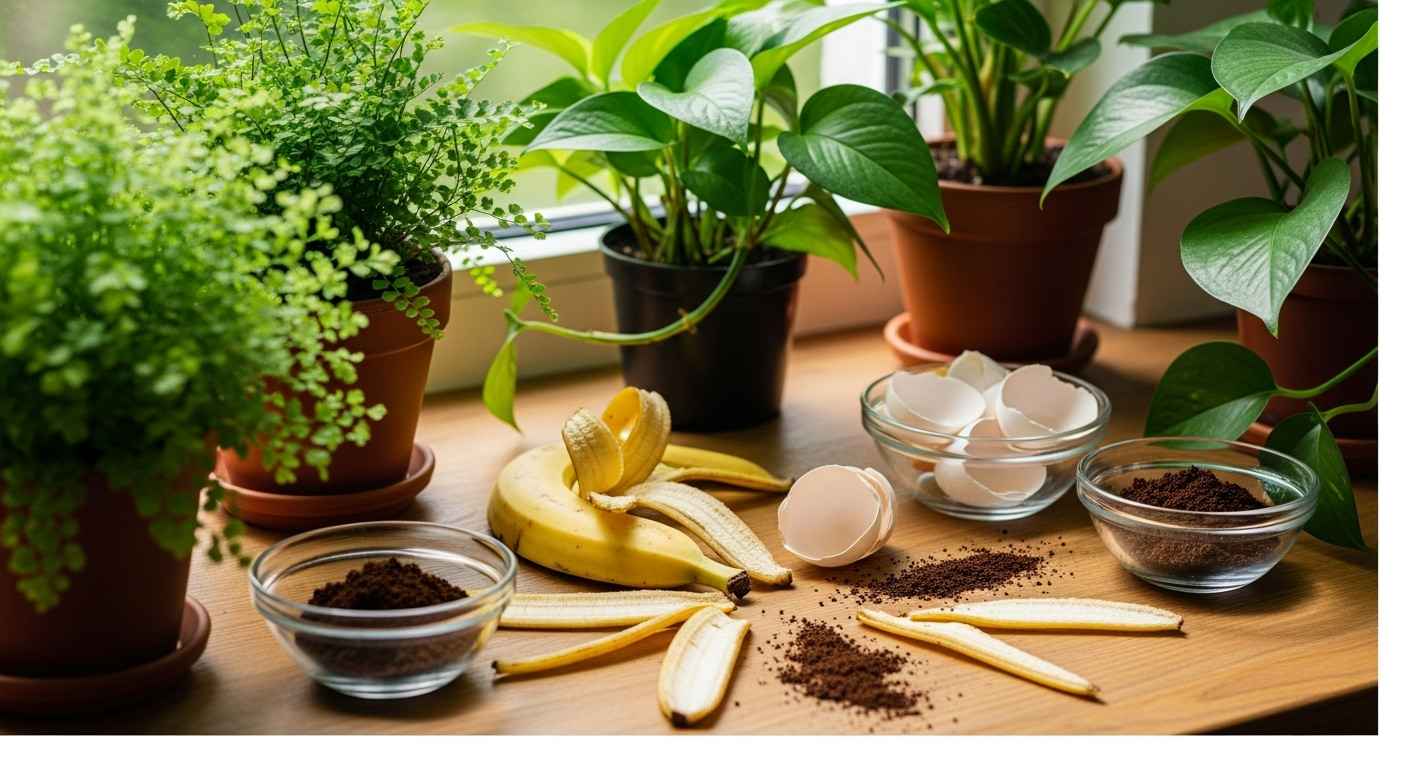Houseplants need nutrients to grow strong. Natural fertilizers use items from your kitchen. They cost little and help the environment. This guide shows how to make them at home. You will find step-by-step methods. These tips work for most indoor plants.
Why Choose Natural Fertilizers?
Natural options come from waste like peels and grounds. They release nutrients slowly. This prevents root burn. Plants get what they need without chemicals. You reduce trash too. Many people ask if these work well. Yes, they do for healthy leaves and roots.

Key Nutrients Houseplants Need
Plants use three main nutrients. Nitrogen helps leaves grow green. Phosphorus builds strong roots. Potassium fights disease. Natural items provide these. For example, coffee grounds give nitrogen. Banana peels offer potassium. Eggshells add calcium for cell walls.
Use a mix for balanced food. Check your plant type. Leafy ones like more nitrogen. Flowering plants need potassium.
Top DIY Natural Fertilizer Recipes
Try these simple recipes. They use common items. Start with small amounts.
Banana Peel Fertilizer for Potassium Boost
Banana peels have potassium. This nutrient helps plants stay healthy. It suits flowering houseplants like peace lilies.
How to make it:
- Chop one or two peels.
- Soak in a jar of water for two days.
- Strain the liquid.
- Water plants with it once a month.
Best for: Orchids and bromeliads. Avoid if peels mold.

Eggshell Powder for Calcium
Eggshells supply calcium. Calcium strengthens plant walls. It prevents weak stems.
How to make it:
- Rinse and dry shells from two eggs.
- Crush into powder with a blender.
- Mix one teaspoon into soil.
- Water as usual.
Best for: Succulents and cacti. Use every three months.
Learn more about plant health in our guide on common plant diseases and solutions.
Coffee Grounds for Nitrogen
Coffee grounds add nitrogen. They also make soil acidic. Acid helps some plants absorb nutrients.
How to make it:
- Dry used grounds from one cup.
- Sprinkle on top of soil.
- Mix lightly.
- Water the plant.
Best for: Ferns and African violets. Limit to once a month. Too much causes fungus.
People often ask if coffee harms plants. No, if used right.
Aquarium Water for Balanced Nutrients
Fish tank water has nitrogen from waste. It acts like mild food.
How to make it:
- Save water during tank cleaning.
- Use only from fresh water tanks.
- Water plants directly.
Best for: Pothos and philodendrons. Apply every two weeks. Skip if you add chemicals to the tank.
Rice Water for Mild Starch
Rice water leaches starches. These act as gentle food.
How to make it:
- Rinse rice in water.
- Collect the cloudy liquid.
- Cool it.
- Water plants.
Best for: All houseplants. Use weekly in growing season.
How Often to Fertilize
Fertilize from spring to fall. That’s March to September. Do it every four to six weeks. Cut back in winter. Plants rest then.
Check our winter plant care tips for off-season advice.
Tips for Success
- Test on one plant first. Watch for yellow leaves.
- Combine recipes for full nutrients. For example, mix coffee grounds with eggshells.
- Store mixtures in cool spots. Discard if they smell bad.
- Water plants before adding fertilizer. This protects roots.
- For herbs, try these methods too. See our guide to growing herbs indoors.
People also search for frequency. Adjust based on plant response.
Common Mistakes to Avoid
Do not over-fertilize. It burns roots. Signs include brown tips. Flush soil with water if this happens.
Avoid wet items. They cause mold. Dry grounds and peels first.
Match to plant needs. Acid-lovers like coffee. Others may not.
For pests, pair with natural controls. Read our organic pest control for potted plants.
Comparison of Natural Fertilizers
| Fertilizer | Main Nutrient | Best Plants | Frequency |
|---|---|---|---|
| Banana Peels | Potassium | Flowering | Monthly |
| Eggshells | Calcium | Succulents | Every 3 months |
| Coffee Grounds | Nitrogen | Ferns | Monthly |
| Aquarium Water | Nitrogen | Leafy | Bi-weekly |
| Rice Water | Starch | All | Weekly |
This table helps choose quickly.
Final Thoughts
Natural fertilizers keep houseplants healthy. They save money and use waste. Start with one recipe. Your plants will show results in weeks. For more, explore low-light options in our low-light plants guide. Prune regularly too. Our pruning tips explain how.
For schedules, see fertilizing schedules for indoor plants.
